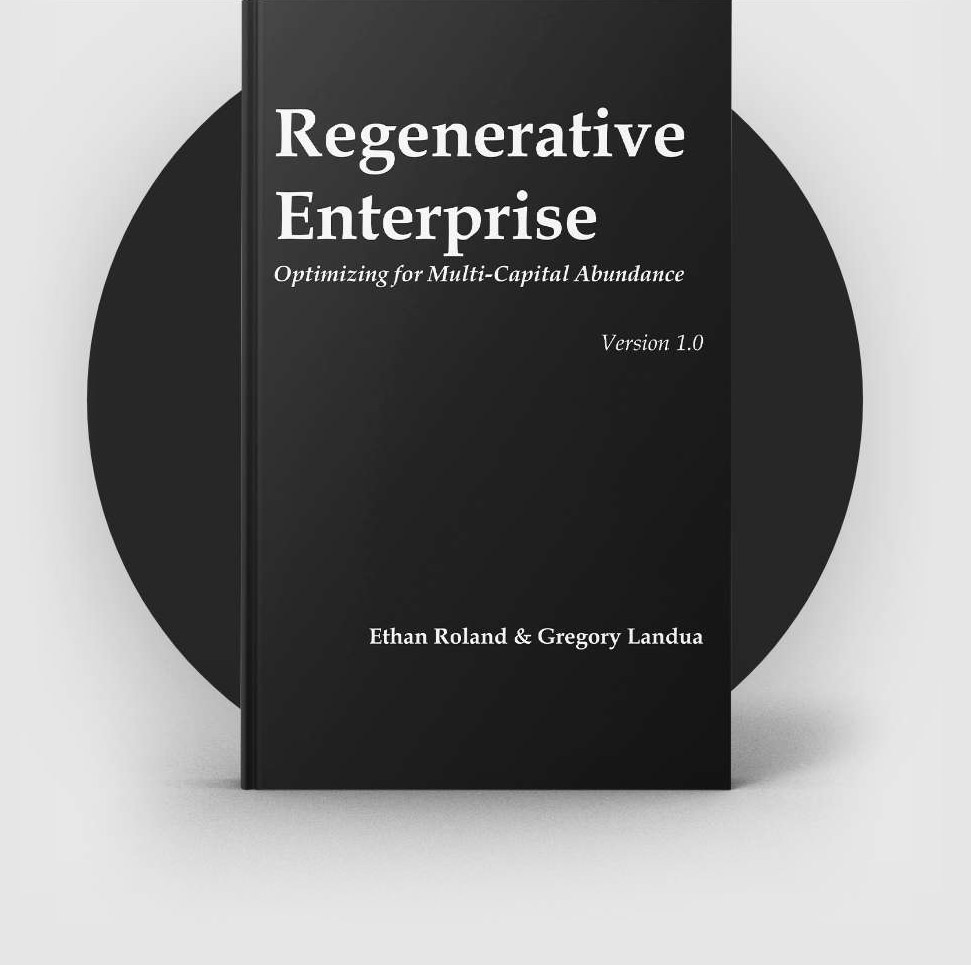Financial Capital to Living Capital
In order to begin restorative development at any scale, regenerative enterprises must identify and reverse the currently predominant inter-capital flows that are degrading ecological, social, and cultural systems. At a macro-level there is one primary flow which, once reversed, will act as a leverage point to restore holistic health and the foundation of wealth for our global society.
The current flow in need of reversal is between living capital and financial capital: living capital is systematically damaged and destroyed in order to build financial capital. From mountain-top-removal coal mining, to rainforest clear-cutting, to chemical-based monoculture farming, to ocean over-fishing, to the entire fossil fuel extraction and combustion industry:27 Living capital decreases, financial capital increases. What would it look like if this trend were reversed?
One exemplar to consider is Polyface Farms in Virginia, USA. On this farm, the Salatin family grows a diversity of grass-based animal products (primarily rabbits, chickens, turkeys, pigs, and cattle) in a way that continually improves the quality and productivity of their land, creates multiple jobs, and earns significant amounts of financial revenue.
Because they are building their soil, catching and storing water, and increasing the health of their forests while they sell top-quality grass-fed meat, their farm system removes financial capital from degenerative systems into vibrant living capital.
A regenerative enterprise can certainly obtain a financial capital profit in the process of regenerating local ecosystems, but the majority of financial capital flowing through the enterprise will be transformed or invested into long-term living, social, and cultural resilience. Polyface Farms’ annual revenue is approximately two million dollars, which they flow back into the land (growing their herds, digging multi-functional ponds, building new infrastructure) and the local community (through jobs, feed purchases, and professional services).28 As Mark Shepard of New Forest Farm writes in Restoration Agriculture,
“Degrade the ecology and degrade the economy.
Restore the ecology and restore the economy.”29
A regenerative enterprise flows financial capital out of the current destructive economic system. The financial capital flows in to non-financial forms of capital, especially living capital.
This financial capital does not disappear. In fact, regenerative enterprises can create significant long-term financial returns, as demonstrated by Windhorse Farm and Polyface Farm. These farms show the balance between long-term financial return and reinvestment in the living capital foundation that generates the surplus in the first place. Financial capital returns should be continuously re-invested into cultivating the health and resilience of living, cultural, social and spiritual capital, not extracted for the purpose of creating financial or material capital that has no functional interconnection with the regenerative context from which it emerged.
Excerpt from:
Regenerative Enterprise: Optimizing for Multi-Capital Abundance by Ethan C. Roland & Gregory Landua
27 Worldwatch Institute. Vital Signs 2012. New York: WW Norton, 2012.
28 Salatin, Joel. Personal Communication. 2012.
29 Shepard, Mark. Restoration Agriculture: Real World Permaculture for Farmers. Austin: Acres USA, 2013.
©2013 Ethan C. Roland & Gregory Landua. All Rights Reserved.
